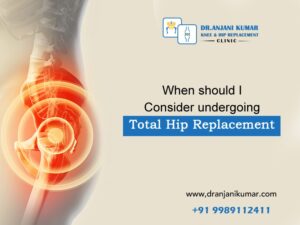Anterior Cruciate Ligament tear(ACL) is most common among the sports professionals, such as basketball, football, and soccer, even though they follow regular fitness exercises. Sometimes ligament tears can also happen due to work injuries or automobile accidents. At the time of injury, “pop” is felt, or the sound is heard. A sudden high-energy impact on the knee, such as sudden stops and quickly changing direction, especially while landing after a jump.
Causes and symptoms:
Causes:
This sustainability is due to the hip and knee’s lack of support to protect the ACL from severe stress caused by sudden jumps, falls, cutting movements, and other mishaps, such as falling off a ladder or missing a step on the staircase. As you get older, the ACL becomes fragile with age. An ACL tear happens more commonly and easily in people older than 40.
Symptoms:
The symptoms of an ACL injury are:
- A loud popping sensation in the knee.
- Chronic pain and inefficiency in doing the activity.
- Rapid swelling.
- Reduced range of motion.
- Inability to bear weight.
Treatment for ACL:
ACL tear has two procedural treatments, non-surgical and surgical.

Non-surgical treatment:
The first immediate procedural treatment you must do after ACL injury is the RICE regimen(Rest, ice, compression, and elevation), which helps reduce pain and swelling. The doctor may advise you to use crutches, which help to keep the weight off the knee, as the braces protect your joint from vulnerability for a couple of weeks. A small tear(sprain) can be cured with non-surgical treatments and revitalizing physical therapy for strengthening the surrounding ligaments to provide stability. Avoiding stressful movements on the knee has to be maintained. But full ACL tear cannot be treated non-surgically.
Surgical treatment for ACL:
The ACL tear may be partial or complete. For an injured ACL reconstruction, the surgeon removes the damaged ligament and replaces it with a tendon – the ligament-like tissue that connects the ankle to the bone.
Partial ACL Tear:
During the ACL surgical treatment, the surgeon removes the damaged ligament and replaces it with a new one. This surgical procedure is called “graft“. The tissues can be made up of the patient’s kneecap tendons or from a donor. The complete ACL surgical procedure usually takes two to a half hours.

Types of ACL procedures:
Depending on the severity of the ACL injury, the surgeon opts for which surgical graft should be followed.
- Patellar tendon autograft:
During the procedure, the surgeon makes a small incision in front of the knee and removes a required portion of the tendon and some bone used to replace the damaged ACL.
The main benefit of graft is that the tendon grows back even after the tissue is out to create the new ACL. The tissue remodels themselves take 12 months or more to recover.
- Hamstring tendon autograft:
In this surgical procedure, grafting involves linking the gap in a tendon with an autogenous donor from the patient itself or a separate donor. The regeneration time differs from person to person. The regeneration process occurs between 1 month to 1 year after the surgery. It takes several months to recover.
- Quadriceps tendon autograft:
The quadriceps tendon is a thick tissue located above the kneecap. The torn ACL ligament of the knee is reconstructed with part of the quadriceps tendons taken from your leg. It takes about 45 days to return to normal daily activities. But to return to sports activity, it takes about seven months.
- Allograft:
A surgery involves transplanting allograft tissue between people or moving it from one part of the body to another. It takes 9 to 12 months to recover and much longer to return to sports activities.
Both surgical and non-surgical procedures take longer periods to recover from ACL Tear, which is compulsory treatment.
Dr Anjani Kumar is a qualified MBBS, Ms orthopaedics surgeon with 20 years of experience. He has performed 2000 knee replacement surgeries, 350 hip replacement surgeries, and 500 pelvic acetabular surgeries successfully, his other specializations are revision surgeries, pelvic acetabular fractures, knee fractures, and ligament injuries. He worked at Vijayawada Govt, General Hospital, and then he worked at St. Johns Medical College, Bengaluru. He is currently working at Narayana Hrudayalaya Hospitals as a Senior Orthpaedic specialist.
Contact:+91 9989112411
Email:anjanikumarkadiri@gmail.com




